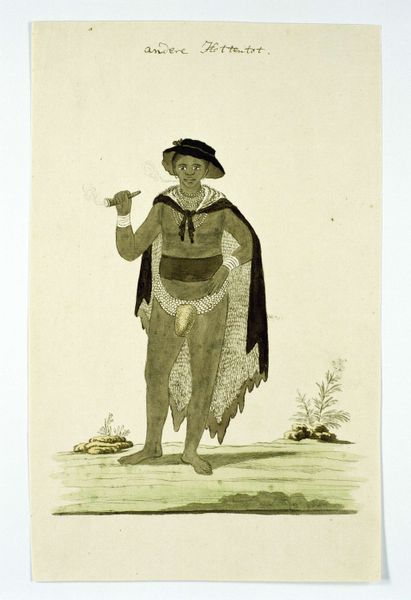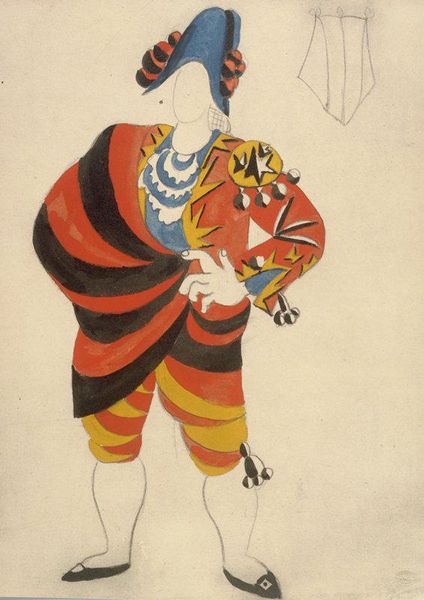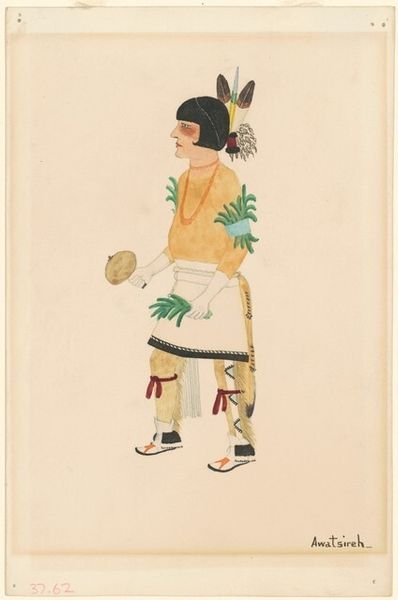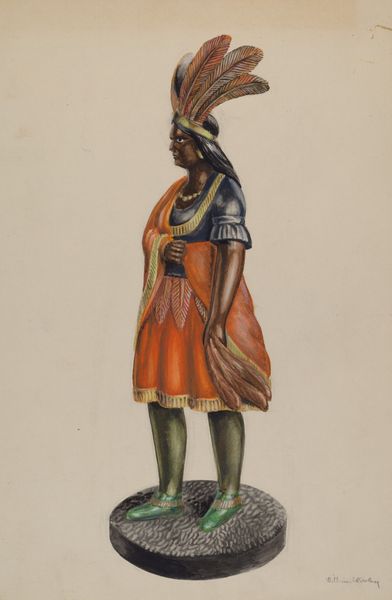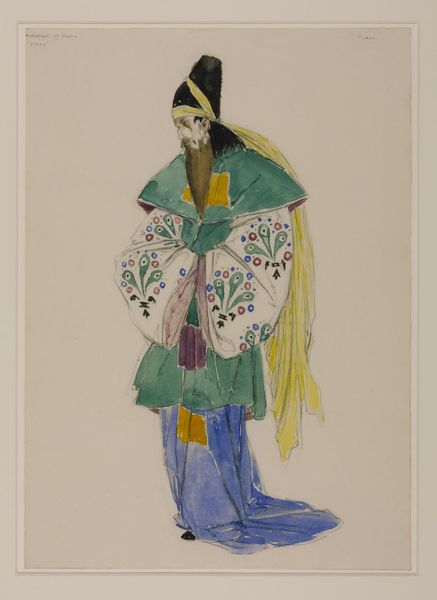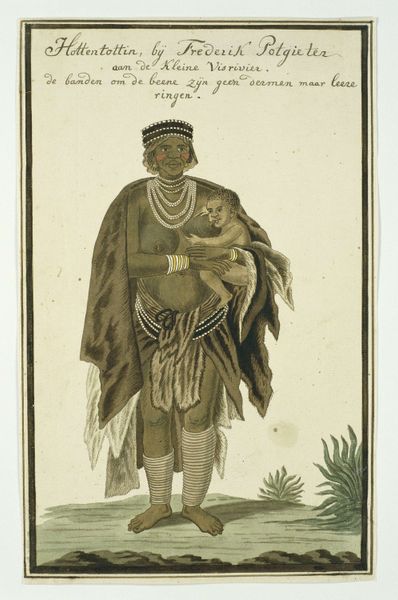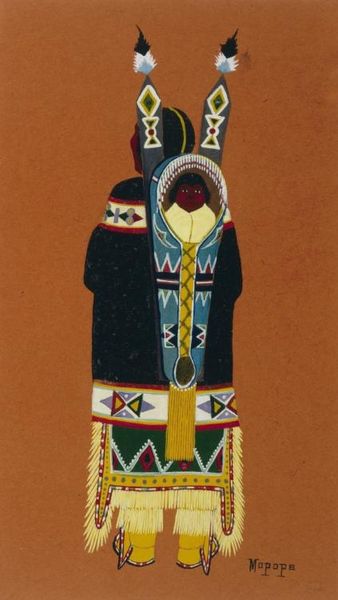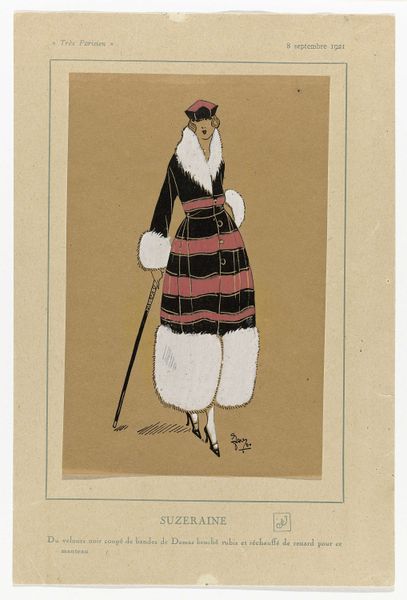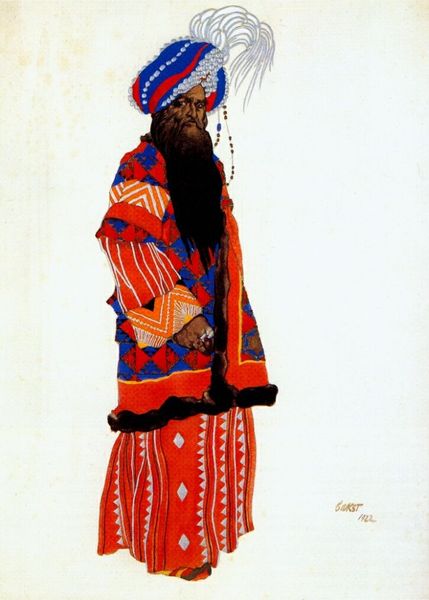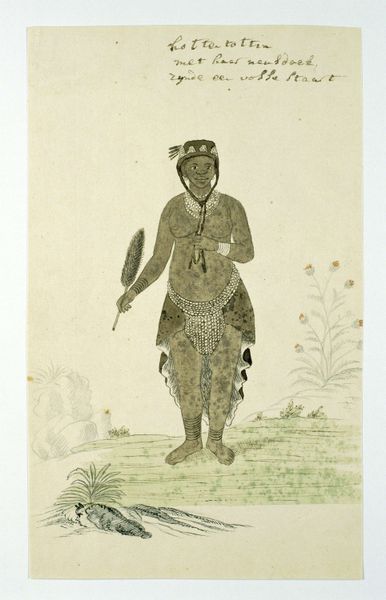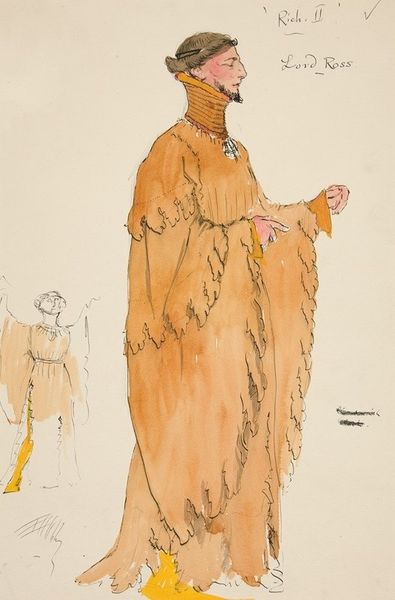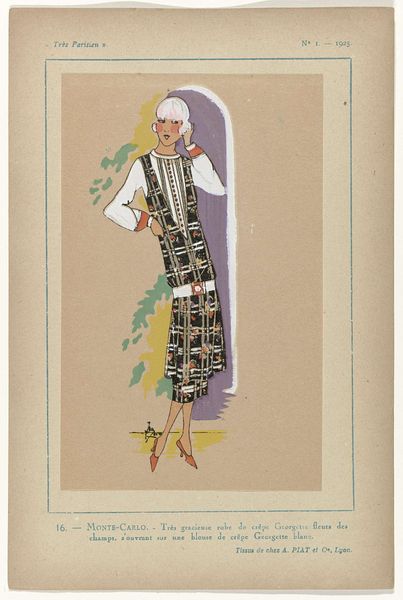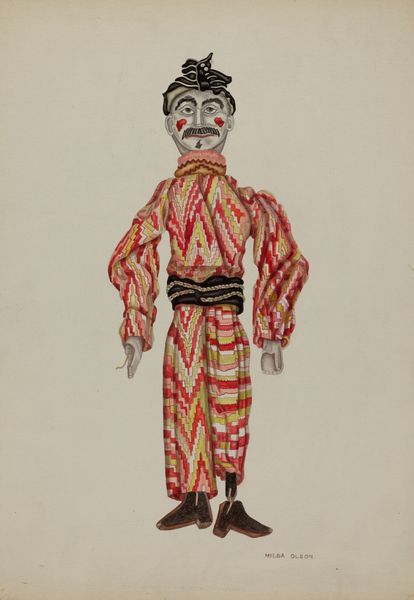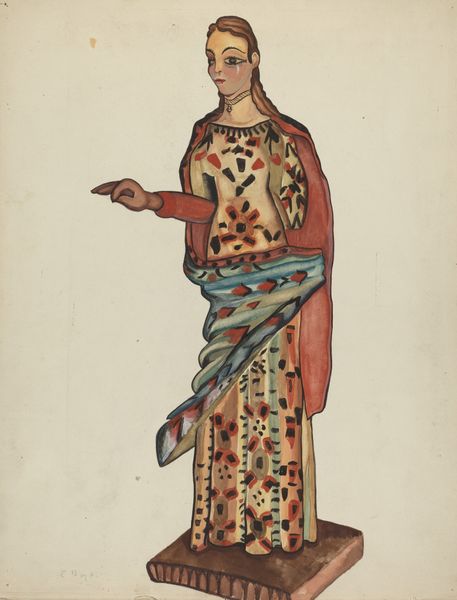
Northumberland – Tabard, costume sketch for Henry Irving’s Planned Production of King Richard II
0:00
0:00
drawing, watercolor
#
portrait
#
drawing
#
medieval
#
caricature
#
figuration
#
watercolor
#
portrait drawing
#
watercolour illustration
#
history-painting
#
portrait art
Copyright: Public Domain: Artvee
Editor: Here we have Edwin Austin Abbey’s "Northumberland – Tabard, costume sketch for Henry Irving’s Planned Production of King Richard II", created using watercolor and drawing techniques. It’s a costume sketch, and the figure appears both regal and somewhat cartoonish. What's your interpretation of it? Curator: This piece is fascinating because it gives us insight into the intersection of theater, art, and historical representation. It's a costume design, meant to construct a specific image of power and nobility for a public audience. Think about Henry Irving's influence on Victorian theatre - he aimed for historical accuracy and spectacle. Editor: So, the sketch isn't just about aesthetics, but about creating a convincing illusion of the medieval period? Curator: Exactly. Consider how the artist used heraldry on the tabard. Those symbols weren't just decorative; they signaled lineage, allegiance, and power within a specific social hierarchy. How effective do you think the artist was in communicating the character's identity with historical cues? Editor: Well, the heraldry definitely suggests nobility. But the bright colors and almost simplified forms feel slightly detached from the grim reality I usually associate with medieval history. It is idealized and designed for stage presence. Curator: That's a key observation! This idealized presentation speaks to the way Victorian audiences wished to perceive the past - as grand, romantic, and easily legible. It’s also important to note that Abbey lived and worked for long stretches in England – he occupied an interesting place as an American artist interpreting British history. Editor: I see, it’s a reflection of Victorian values and stagecraft rather than a documentary approach to medieval England. It makes me wonder what historical sources Abbey may have drawn upon when designing the costumes. Curator: Precisely. Thinking about its purpose – its relationship to theater and Victorian society – gives the piece an entirely different context and makes the sketch itself an interesting historical object, beyond simply a portrait. Editor: That really changes how I see it! Thanks, I’ll keep in mind to investigate context when approaching artworks. Curator: My pleasure. Always consider art's role in the grander cultural narrative.
Comments
No comments
Be the first to comment and join the conversation on the ultimate creative platform.
